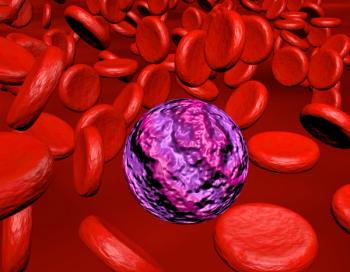
- Oncology Vol 30 No 4_Suppl_1
- Volume 30
- Issue 4_Suppl_1
(S012) Quantitative Imaging to Evaluate the Malignant Potential of Pancreatic Cysts
Intraductal papillary mucinous neoplasms with high malignant potential appear to have distinct imaging properties. Further validation of these findings may address a major clinical need in this population by identifying those most likely to benefit from surgical resection.
Alexander N. Hanania, BS, Leonidas Bantis, PhD, Ziding Feng, PhD, Huamin Wang, MD, PhD, Eric Tamm, MD, Matthew Katz, MD, Anirban Maitra, MD, Eugene Koay, MD, PhD; UT MD Anderson Cancer Center
BACKGROUND: Pancreatic cysts are identified in over 2% of the population, and a subset of them, including intraductal papillary mucinous neoplasms (IPMNs), represent premalignant lesions. Unfortunately, clinicians cannot accurately predict which of these lesions are likely to progress to pancreatic ductal adenocarcinoma. We explored the use of quantitative imaging to help address this clinical dilemma.
METHODS: We investigated 360 imaging features within the domains of intensity, texture, and shape using pancreatic protocol CT images of 53 cystic lesions in patients diagnosed with IPMN (34 high-grade [HG] and 19 low-grade [LG]) who subsequently underwent surgical resection. We compared the performance of these features with the standard Sendai criteria. We focused on top-performing imaging markers, based on receiver operating characteristic (ROC) and ROC (0.05) performances (a false positive rate of 5%). Additionally, we constructed a panel based on the Akaike information criterion, scrutinizing combinations of top-performing markers. We also considered principal component analysis of the imaging features to further evaluate differences in the IPMNs.
RESULTS: We identified 14 imaging biomarkers within a gray-level co-occurrence matrix (GLCM) that predicted histopathological grade. The most predictive marker differentiated LG and HG lesions with an area under the curve (AUC) value of 0.82 at a sensitivity of 85% and specificity of 68%. Conversely, the Sendai criteria had a sensitivity of 97% and a specificity of 0%. Using a cross-validated design, the best logistic regression model yielded an AUC value of 0.95 (Ï = .05). Based on the principal component analysis, LG and HG cysts demonstrated a pattern of separation.
CONCLUSIONS: IPMNs with high malignant potential appear to have distinct imaging properties. Further validation of these findings may address a major clinical need in this population by identifying those most likely to benefit from surgical resection.
Proceedings of the 98th Annual Meeting of the American Radium Society -
Articles in this issue
Newsletter
Stay up to date on recent advances in the multidisciplinary approach to cancer.


















































































